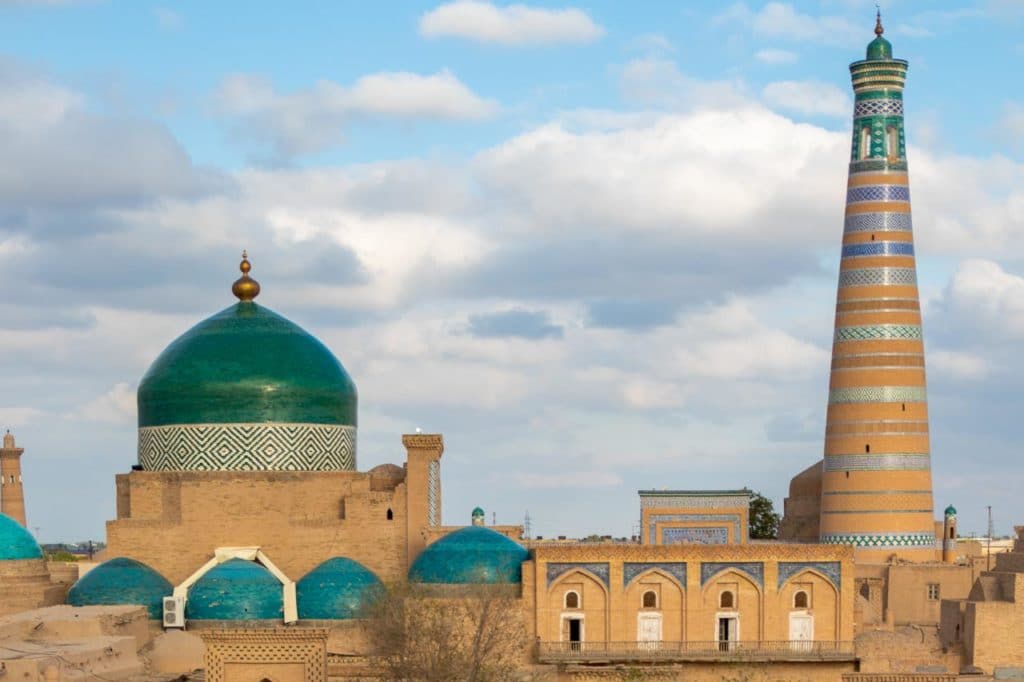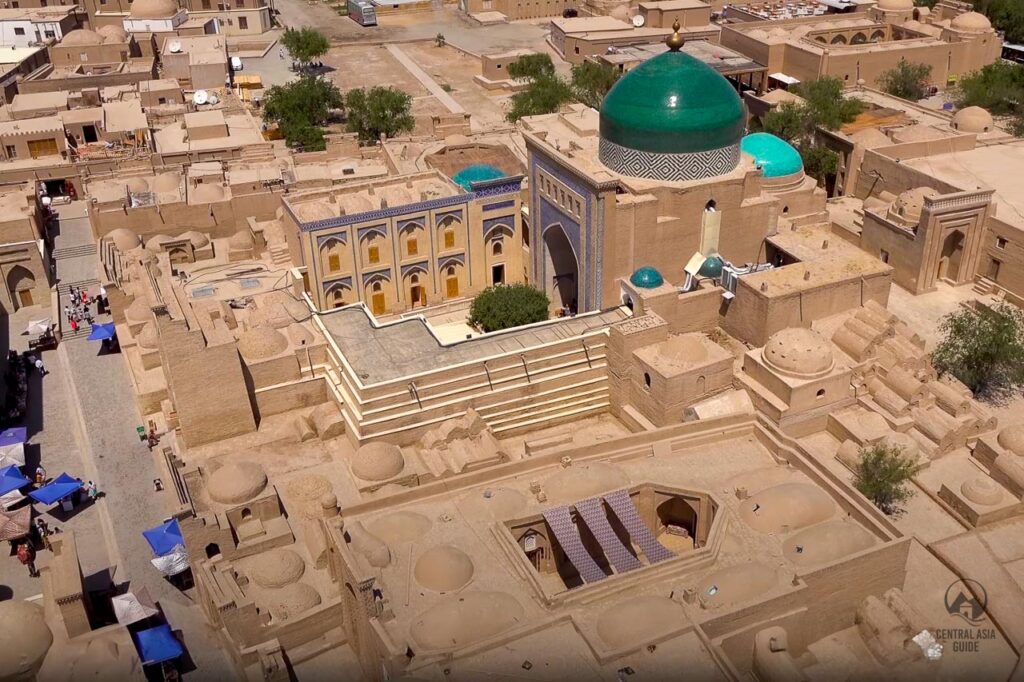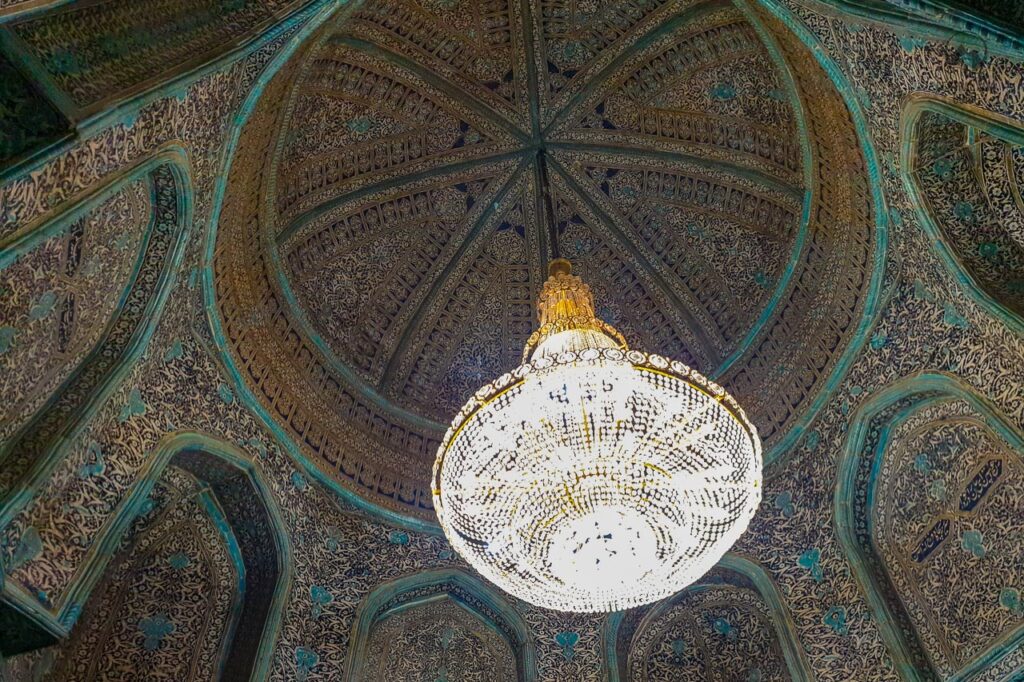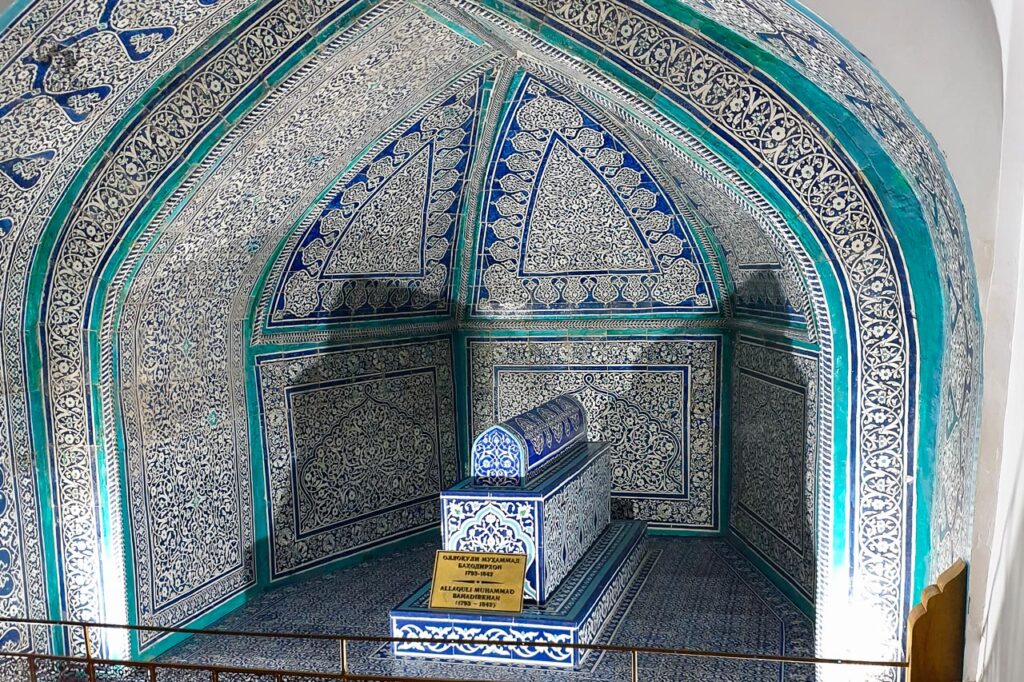Pahlavan Mahmoud Mausoleum
Pahlavan Makmoud Mausoleum
The turquoise dome of the Pakhlavan Mahmud mausoleum rises up from the Khiva Ichan Kala architecture. It is the largest dome in Khiva, covered with blue glazed tiles with a shining gilded top. Pahlavan Mahmoud was a poet, philosopher and wrestler and even was considered a patron of a healers throughout Khiva, Iran and India. Tradition has it that the poet was buried in his own workshop. The tomb had formed around his burial place in the 14th-17th centuries. When Shirgazi-khan built a madrassa at the beginning of the 18th century, he turned it towards the tomb of Pahlavan-Mahmud.


The Pahlavan Mahmoud complex was expanded extensively in the 17th and 18th centuries to include a summer mosque, cemetery, reading rooms, kitchen and a decorative portico, and there are 19th-century additions as well. A number of significant Khivan figures are buried here including Abdul Gazi Khan (1663), Muhammad Rahim Khan I (1825) and the mother and son of the assassinated Isfandiyar. The access to the complex goes through an 18th-century portal that opens out onto a pleasant courtyard framed by a khanagha and hujas, the summer mosque and well. Every surface is exquisitely furnished in each imaginable shade of blue, blue-green and turquoise, and a vast blue dome. This sight has been restored in 1993 after it was brought down by surprisingly heavy snowfall. Pahlavan Mahmud is buried behind a screen inlaid with ivory, local folk motifs decorating his eternal chamber.
During the days of building, the majolica tiles that adorn the complex were worth a weight in gold. Local rulers generously covered most of the buildings with glazed ceramics and the Khiva masters did not disappoint either. You can see the impressive work of ceramic artists. Copper lattice was used as a decoration for windows and niches. The inner walls of the tomb amaze with the abundance of painted green “bows”. Golden ligature stands out against their background. The mausoleum of the khans is dominated by blue-blue and white tiles.
The chapel, on the other hand, is distinguished by more restrained ornamentation the blue and white pattern is diluted with a few verses. If attentive, you can notice the date “1810” on the door of the room. The date “April 6, 1353” on the copper doorknob of the Sufi monastery also refers to the year of construction. In the doors of other rooms, you can even notice curly elements decorated with valuable species of wood and the engraved name of the master. Certainly due to the detailed work of the masters, the Pahlavan Mahmud is listed in UNESCO list as a World Heritage Sites together with many other sights of Ichan Kala.


Other sights in Khiva
Page updated 1.2.2025